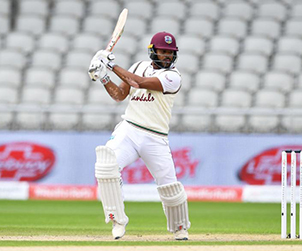Maybe the darkest hour really is right before the dawn.
After a few months when defeats and infighting had become the norm in English cricket, the sun is starting to break through the clouds.
These are exciting times. A new team, unburdened by the past, unencumbered by fear, unwearied – as yet – by the schedule is coming together. It promises much.
In Joe Root and Gary Ballance, England have two of the finest young Test batsmen in world cricket. They appear to have the hunger, the technique, the temperament and the time to flourish for a decade or more. Root is currently averaging in excess of 100 since he came back into the side in 2014 and is arguably the most prolific batsman in the world at present. Another 50 in his next Test innings will place him among a very select group of players – Andy Flower, Sir Everton Weekes, Shivnarine Chanderpaul and Kumar Sangakkara – to have made seven consecutive Test half-centuries. At 24, he has the world at his feet.
Ballance meanwhile will know he squandered a chance to record his fifth century in his just his 10th Test. It is an astounding start and there seems little reason why it should not continue. There is just a little Jacques Kallis about him and praise for batsmen comes little higher.
It does not stop there. Ben Stokes has yet to gain the figures to show for it, but he has bowled especially well on this tour. Strong and ever more skilful and disciplined, there is reason to believe he can be the latest in a line of great modern England allrounders that includes Tony Grieg, Ian Botham and Andrew Flintoff. And that mad dog glare in the heat of battle? It’s part of the package. No-one should look to tame him.
Jos Buttler completes the quartet. His keeping standing up to the stumps remains a work in progress, as does his batting against spin. Australia will no doubt also test his ability against the short ball. But it is hard to think of a more talented batsman in the English game and, so far in his brief Test career, he has proven to be selfless, positive and tough. There is no reason why he cannot overcome each challenge as it arrives.
Tougher challenges await for sure. New Zealand’s seamers will test and probe, and England players will continue to be judged, rightly or wrongly, by their record against Australia. Each of the fantastic four will, no doubt, have some stumbles along the way.
But England have unearthed some gems and they need to stick with them.
There are still issues to resolve. Doubts remain about the incisiveness of England’s seam attack. It is understood James Anderson and Stuart Broad were given a pretty stiff talk by the coach ahead of their improved performance on day two of this match. While there are contenders pushing for inclusion – the likes of Mark Wood and Liam Plunkett – it would be unfair to pretend any of them match the cutting edge of an Australian squad that may include Ryan Harris, Mitchell Starc and Mitchell Johnson.
The other obvious hole comes at the top of the order. With Alastair Cook struggling for form of late and none of his partners making an unassailable case for retention, it fell to Jonathan Trott to become his fifth opening partner since the retirement of Andrew Strauss.
Here, at least, Trott did a pretty solid job of it. After a nervous return in Antigua, he was more still at the crease, more certain of which balls to play and which to leave and, in partnership with his captain and old friend, posted England’s first century opening stand in a Test since the Dunedin Test in March 2013.
He had some fortune. The absence of Jerome Taylor renders the West Indies far less potent with the new ball and the pitch remains docile. Equally, it probably helped to bat second and settle into the game in the field.
But the attack has pace – Shannon Gabriel achieved speeds of over 94 mph – and Trott’s perceived weakness against the short ball was tested by a series of bouncers that were ducked without issue. With a quicker outfield, several of his ones or twos would have become fours. Trott will kick himself for failing to capitalise on his start as there was a century here for the taking but he looked composed, assured and calm. It was an encouraging if not totally convincing performance.
Cook will continue to be dogged by the statistic about how long it is since he made a century – 23 months and counting – but there are signs of progress. He looks more solid in defence and even managed a few strokes through the covers, a sure sign that his game is somewhere near its best. Cook has now passed 70 three times in his last five Test innings and is averaging 60.16 in that time. More is required of course, but judging purely by centuries is disingenuously arbitrary.
It is a partnership that will never win over all the doubters. Doubters who presume that other options would score more quickly, doubters who feel that Trott will wilt in the heat of an Ashes battle, doubters who seem to have forgotten the many fine contributions the pair have made to their side over several years.
But it is naive to explain away each success. West Indies had not conceded a century opening stand since November 2010 – 39 Tests ago – when Sri Lanka were the opponents. If Trott and Cook can manage to do what others have failed to do, it deserves some respect.
Besides, they laid the foundations on which Root and Ballance built. They saw off the new ball and drew the sting from the attack. In short, they did exactly the job given to them as opening batsmen.
It is too early to judge whether the experiment will be a success. But, on a day when a great deal went right for England, it was another step in the right direction.




















